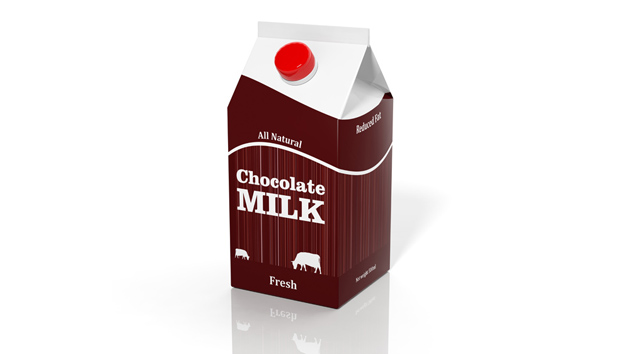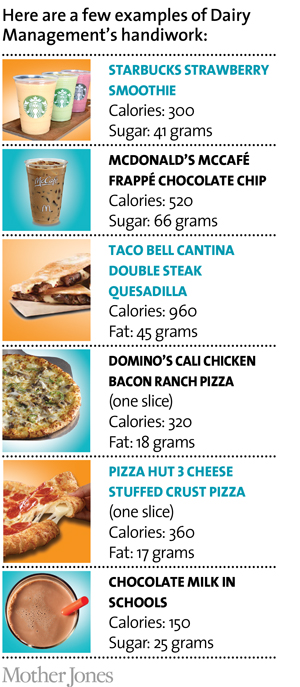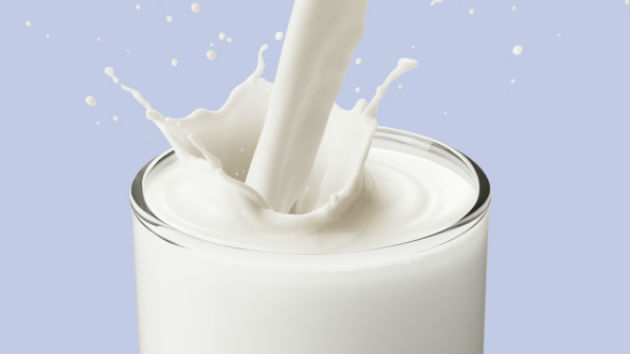
<a href="http://www.shutterstock.com/pic-225453925/stock-photo--d-choco-milk-carton-box-isolated-on-white.html?src=csl_recent_image-3">Gts</a>/iStock
Ever wonder why school lunches are pushing sweetened milk? Or why fast-food restaurants suddenly offer concoctions like pizza with “40 percent more cheese”? You can thank the dairy checkoff, a USDA-supervised system under which dairy producers pay into a kitty to promote their industry. The checkoff’s marketing arm, Dairy Management Inc., runs “programs aimed at promoting dairy consumption and protecting the good image of dairy farmers, dairy products and the dairy industry.” Sounds good for farmers and Americans, right? Well, not exactly: Dairy Management regularly helps create new menu items—many of which are a far cry from the USDA’s recommendations for a healthy diet.

Take chocolate milk: Most US schools now ban sodas and other sugary beverages, but flavored milk usually gets a free pass. A single serving of chocolate milk contains between four and six teaspoons of sugar (the recommended daily limit for young children is three teaspoons)—and yet 70 percent of milk served in schools is flavored.
What gives? In a 2014 report, public-interest lawyer Michele Simon noted that sales of milk drop by 35 percent when schools replace flavored milk with plain varieties at cafeterias, and that schools make up 7 to 8 percent of the total market for fluid milk. “That’s a sizable and important piece of business,” Barbara O’Brien, senior executive vice president of Dairy Management, told a trade magazine in 2011. “Those sales are crucial to lifelong dairy consumption and keeping people positively inclined to our products and our industry.”
So the dairy industry came to the rescue. With money from the dairy checkoff, the National Milk Processor Education Program launched a campaign to keep flavored milk in schools with slogans like, “Raise your hand for chocolate milk!” and “Chocolate milk has muscle.” That same year, Simon reported, dairy-checkoff-funded groups teamed up with the National Football League to launch Fuel Up to Play 60, a program that promotes chocolate milk as a way to “fuel up” with protein and vitamins. With an annual budget of $50 million from the dairy checkoff, the program reaches 73,000 schools. And there may be more sweet milk coming soon: The School Milk Nutrition Act of 2015 would permit cafeterias to serve a 1 percent version along with the nonfat kind that the current rules allow.
Schools aren’t the only places where Dairy Management promotes milky treats—it also works hand in hand with fast-food restaurants to develop new menu items. The chart above shows a few examples.

















